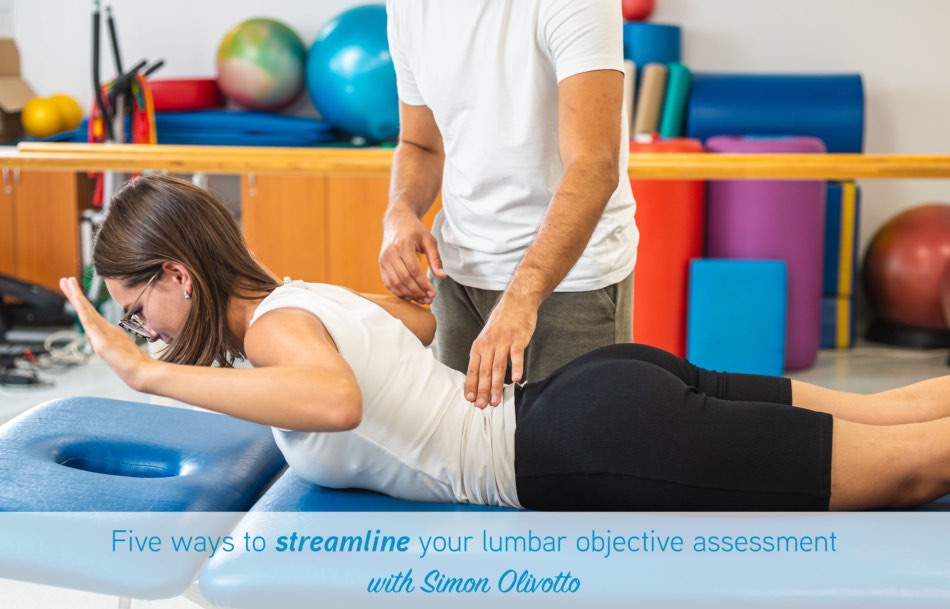When your low back pain patient stands there full of expectation, waiting to be helped, what is your approach to lumbar spine objective examination? After all, your objective assessment is the secret to getting the information you need to implement a successful treatment approach.
When starting out, we often perform every possible test. ROM in every direction, combined movements, quadrants posture, strength tests, motor control…
It can become a box-ticking exercise that is an enormous waste of time!
Not only this, but you run out of time during consults to do any meaningful treatment, leaving patients frustrated and unhappy. Even worse, sometimes patients end up worse than when they walked in!
There is a time and place for all these tests, but we need to be intelligent and efficient, only applying tests that give us the necessary information.
This presentation will take you through five strategies to streamline your lumbar spine assessment, saving time and targeting your treatments for better results.
You’ll discover:
- How to narrow down your lumbar spine examination using patient-centred care principles
- How to work out how many objective tests are required to get the necessary information
- How to communicate with your patients during an objective examination to reduce the chances of stirring your patient up
- How to determine whether you need to provoke symptoms with tests or instead aim to relieve symptoms
- How to factor in a patient’s pain irritability when deciding how many tests are needed
- When to start your examination with functional observations and tests
- How to determine whether a posture or functional movement is the cause of your patient’s problem
- How to determine the reasons why your patient may move in an unhelpful way, and what you can do about it
- How to rule in or rule out a diagnosis
- When and why to use pain sensitivity testing
- When to perform neurological testing
- How to cut to the chase and get straight into solving your patient’s problem without fluffing around and wasting time with unnecessary tests
- How to be precise and targeted with assessing and measuring your treatment effect
- How to apply these 5 simple strategies, demonstrated with a patient case study, to streamline your assessment and improve your treatment results, leaving you and your patients happy
CLICK HERE to improve your assessment & diagnostic skills with a free trial Clinical Edge membership

